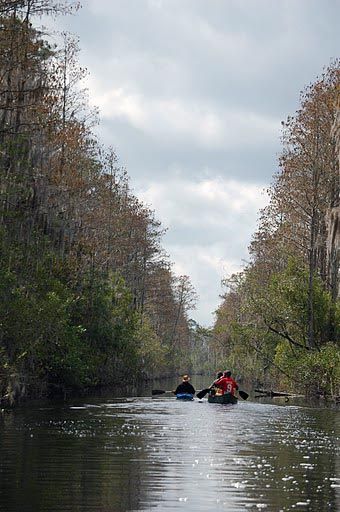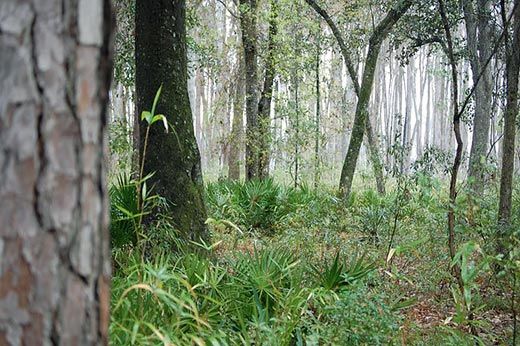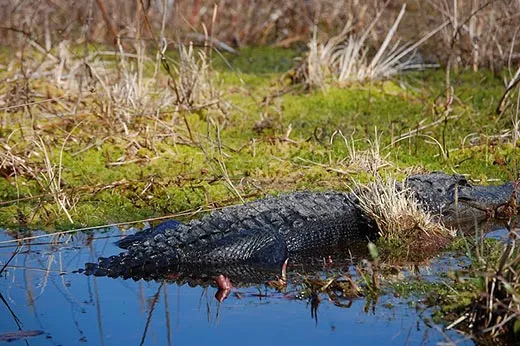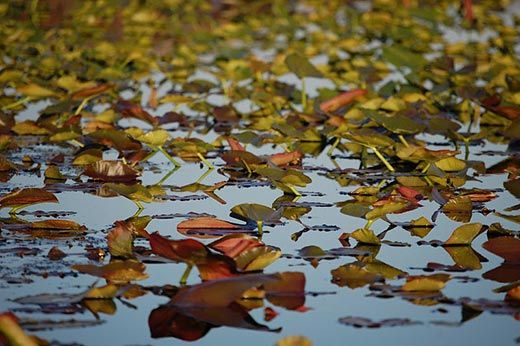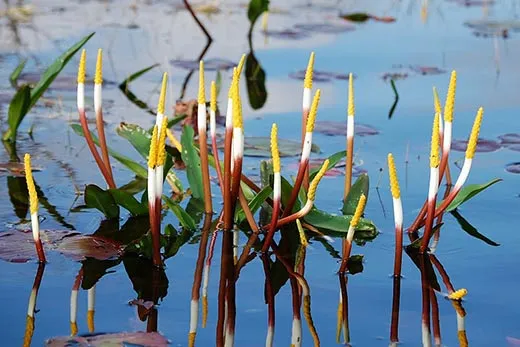Canoeing in Okefenokee Swamp
A trip through the wildlife refuge’s waterways reveals more than just gators and grasses
/https://tf-cmsv2-smithsonianmag-media.s3.amazonaws.com/filer/Okefenokee-Swamp-631.jpg)
When I first read about the Okefenokee Swamp as a 10-year-old boy, I immediately wanted to go. I pictured a muddy jungle perfect for exploring; a flooded forest filled with snakes and alligators. But for some reason, my parents weren't eager to plan a family vacation to a soggy wilderness on the border of Georgia and Florida.
Nearly two decades after I first heard of the swamp, I set off in March to canoe across it with four friends. I soon found that the swamp was much more varied than my childhood image. Habitats in Okefenokee range from shallow lakes to sandy forests. “Unless you see all sides of the swamp, you really don't see the swamp,” explains Grace Gooch, a ranger at the refuge. Our three-day journey would hit the swamp's highlights. A true backwoods experience, it was unlikely we would run into other people after entering the swamp’s designated wilderness area.
The Okefenokee is an enormous peat bog 38 miles long by 25 miles wide, created 7,000 years ago when a wide depression filled with decaying vegetation. Okefenokee means “land of the trembling earth” in Choctaw, a reference to the quivering ground of especially boggy areas. The Okefenokee National Wildlife Refuge was officially established in 1937 to preserve one of America’s oldest freshwater systems, an important habitat for an abundance of plants and animals that live in its 400,000 acres. It is the largest wildlife refuge in the East.
We began our journey on a sunny South Georgia morning, entering the swamp via an old peat mining canal at Kingfisher Landing, with water blackened by tannic acid from decomposing plants. From the forest we paddled into a series of small lakes where the views opened up into a wet version of the Great Plains, dotted with lily pads and grasses. Signs marked a cleared canoe trail that meandered through the plants.
The big-sky vistas were at odds with the image of a deep, dark swamp. But about a fifth of the swamp is considered prairie, flooded on average by about a foot of water. Natural fires burn forest during dry spells, creating lakes and marshy areas that are perfect hunting grounds for wading birds. Here, five-foot-tall sandhill cranes poked their long, skinny bills among the grass, while egrets and ibises flew overhead.
It wasn’t long before I encountered my first gator, an eight-footer sunning itself a few yards from my canoe. With tough, leathery scales, a spiked tail and massive head, it looked like it wandered out of Jurassic Park. But the alligator barely reacted to my presence. Over the course of the trip, I learned that gators do their best to avoid confrontation. Most of the dozens I passed either stayed still or swam away slowly.
Along the canoe trail, large clumps of knee-high pitcher plants grow thickly on patches of bright green sphagnum moss. The plants have a unique adaptation that allows them to thrive in the nutrient-poor soil. The reddish leaves curl into tubes that lure insects that fall into digestive enzymes in the bottom, feeding the plant.
After paddling eight miles, we reached our first campsite; a wooden platform a few feet above the water. It sat on the edge of a lake filled with purple lily pads and yellow flowers. The sun sank low, and the orange sky silhouetted a patch of trees dripping with curly beards of Spanish moss.
I was struck by the absence of any sign of people, but the swamp still teemed with life. As the sky darkened, I heard an orchestra of night sounds. Pairs of cranes sang together, a trumpeting that reverberated across the swamp. Choruses of frogs chimed in. Night fell, and owls hooted and howled from trees dotting the prairie. The stars reflected brightly off the inky water while the Milky Way glowed in the sky. I was content to listen and trace the stars in the constellations.
The next day, the canoe trail narrowed until it was barely wider than the boats as we entered a thick tangle of vines, bushes and trees. Suddenly, something torpedoed out of the water and hit me. An 18-inch chain pickerel fish rolled off my lap and lay flopping in the bottom of the canoe.
We pushed through flooded forest until we finally reached dry ground. Floyd’s Island is a sizeable stand of oaks, pines and magnolia in the middle of the swamp. I spotted a small herd of deer grazing on the sandy soil. An old cabin stood near the boat landing, built in the early 20th century as a hunting retreat for owners of the Hebard Cypress Company, which logged the swamp.
On our last day in the Okefenokee we canoed on the Suwanee Canal, built more than 100 years ago to drain the swamp and make way for sugarcane, rice and cotton plantations. The canal was never completed, and cypress logging became the swamp’s major industry until the refuge was established and prohibited commercial enterprise.
On my trip down the canal, I spotted a new alligator every few minutes, sunning amid fallen logs. Cypress trees lined the banks, nearly lost in the thick, gray tendrils of Spanish moss. The wide, straight canal eased me back into civilization, leading me to the refuge visitor's center.
After leaving the swamp, I called Jackie Carter, who clears canoe trails in the refuge and whose family has lived on the edge of the swamp for generations. He considers the Okefenokee one of the most beautiful places on earth, and says all of us can learn from it. “It teaches you a lot about humility. The swamp is always teaching you something,” he told me. “People get in there and feel the peacefulness and quiet.”
